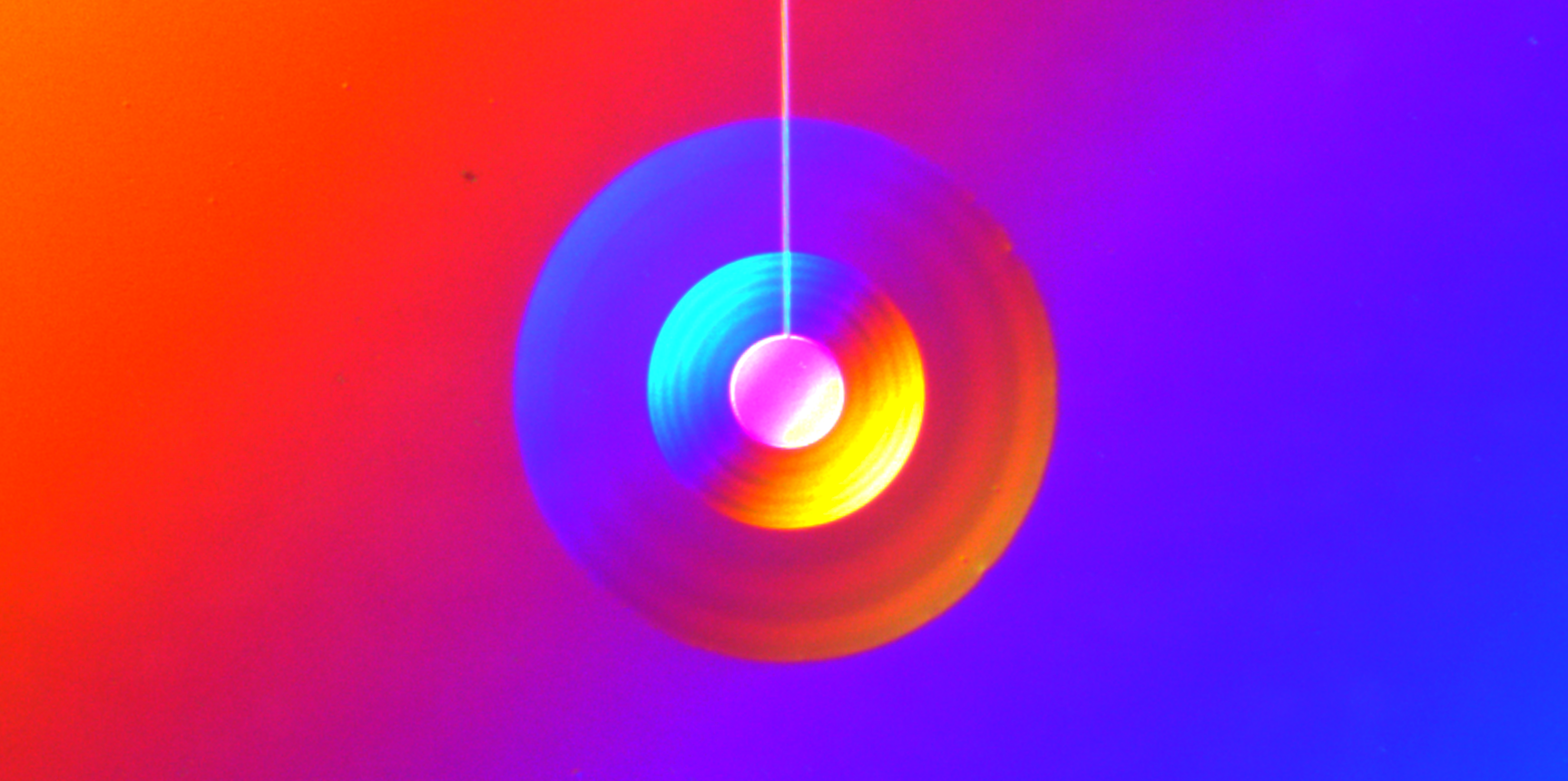In a series of important experiments, typical quantum-mechanical characteristics have been studied in mechanical systems, including entanglement and energy quantization.
 Optical microscope image of the acoustic resonator viewed from above (two larger disks, the inner of which shows the piezoelectric transducer) and of the antenna connected to the superconducting qubit (white structure). Image Credit: Adapted from von Lüpke et al. Nat. Phys. DOI: 10.1038/s41567-022-01591-2 (2022).
Optical microscope image of the acoustic resonator viewed from above (two larger disks, the inner of which shows the piezoelectric transducer) and of the antenna connected to the superconducting qubit (white structure). Image Credit: Adapted from von Lüpke et al. Nat. Phys. DOI: 10.1038/s41567-022-01591-2 (2022).
However, to put these systems to use in important studies and technological applications, quantum properties must be first observed. The next step would be to master the management of mechanical quantum objects so that their quantum states can be regulated, measured, and ultimately manipulated in device-like structures.
The team of Yiwen Chu in the Laboratory of Solid State Physics at ETH Zurich has currently made a considerable advance in that direction. Illustrating in the journal Nature Physics, they report the extraction of data from a mechanical quantum system without damaging the valuable quantum state. This advance makes way for quantum error correction, etc.
Massive Quantum Mechanics
The ETH physicists utilize a slab of superior quality sapphire, less than half a millimeter in thickness, as their mechanical platform. A thin piezoelectrical transducer is positioned on top, and can stimulate acoustic waves, which are reflected at the bottom and as a result spread across a well-defined volume within the slab.
These excitations are the collective wave of a vast number of atoms. Yet, they are quantized (in energy units called phonons) and can be exposed, in theory at least, to quantum operations in quite the same ways as the quantum states of photons, atoms, and electrons.
Interestingly, the mechanical resonator can be interfaced with other quantum systems, and with superconducting qubits specifically. The latter are miniature electronic circuits wherein electromagnetic energy states can be quantized, and they are presently one of the top platforms for constructing scalable quantum computers. The electromagnetic fields related to the superconducting circuit allow the coupling of the qubit to the piezoelectrical transducer of the acoustic resonator, and thus to its mechanical quantum states.
The best of the two domains can be combined in these types of hybrid qubit–resonator devices. The well-developed computational features of superconducting qubits can be employed in synchrony with the strength and prolonged lifetime of acoustical modes, which can work as transducers or quantum memories.
However, just coupling qubit and resonator states for such applications will be sufficient. For instance, a direct measurement of the quantum state in the resonator terminates it, making repetitive measurements difficult. Instead, the ability to extract data about the mechanical quantum state in a more subtle, well-controlled manner is required.
The Non-Destructive Path
Establishing a procedure for quantum non-demolition measurements was accomplished bu Chu’s doctoral students Uwe von Lüpke, Marius Bild, and Yu Yang, partnering with Branco Weiss fellow Matteo Fadel and with assistance from semester project student Laurent Michaud.
During their experiments, no direct energy exchange occurred between the superconducting qubit and the acoustic resonator when the measurements were carried out. Instead, the qubit’s properties were made to rely on the number of phonons in the acoustic resonator, with no requirement to directly ‘touch’ the mechanical quantum state—visualize a theremin, the musical instrument in which the pitch relies on the position of one of the musician’s hands, without directly making physical contact with the instrument.
It is highly challenging to develop a hybrid system wherein the state of the resonator is reflected in the spectrum of the qubit. There are rigorous demands on how the duration of the quantum states can be continued both in the qubit and in the resonator before they vanish because of inadequacies in the material and external perturbations.
Therefore, the job of the researchers was to extend the lifetimes of the qubit as well as the resonator quantum states. They successfully incorporated a series of enhancements, including a meticulous selection of the type of superconducting qubit employed and enclosing the hybrid device in a superconducting aluminum cavity to guarantee secure electromagnetic shielding.
Quantum Information on a Need-To-Know Basis
Having effectively engineered their system into the preferred operational regime (the ‘strong dispersive regime’), the researchers could gradually extract the phonon-number distribution in their acoustic resonator after stimulating it with various amplitudes.
Furthermore, they establish one single measurement (whether the number of phonons in the resonator is odd or even)—a so-called parity measurement—without acquiring anything else regarding the scattering of phonons. Gaining this detailed data is vital in several quantum-technological applications.
For instance, an alteration in parity (a changeover from an even to an odd number or vice versa) can signal that an error has impacted the quantum state and that amending is essential. Here, the to- be-modified state must not be damaged.
Before the execution of such error-correction arrangements is made possible, however, additional alteration of the hybrid system is essential to enhance the operations' fidelity. But quantum error correction is definitely not the only prospective application on the horizon.
There are plenty of stimulating theoretical suggestions in the scientific literature for both quantum-information protocols and fundamental studies that gain from the fact that the acoustic quantum states reside in enormous objects. These offer, for example, exclusive opportunities for investigating the scope of quantum mechanics within the limit of large systems or for utilizing the mechanical quantum platforms as sensors.
Journal Reference:
von Uüpke, M., et al. (2022) Parity measurement in the strong dispersive regime of circuit quantum acoustodynamics. Nature Physics. doi.org/10.1038/s41567-022-01591-2.